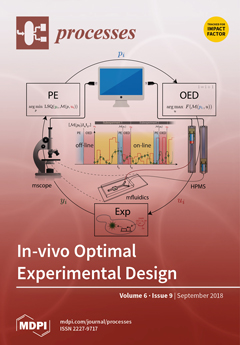Open AccessFeature PaperReview
Recent Advance on Draw Solutes Development in Forward Osmosis
by
Qingwu Long 1,2,3,*, Yongmei Jia 2,4, Jinping Li 3, Jiawei Yang 3, Fangmei Liu 3, Jian Zheng 1,2,3 and Biao Yu 2,4,*
1
Key Laboratory of Clean Energy and Materials Chemistry of Guangdong Province College (Lingnan Normal University), Department of Education of Guangdong Province, Zhanjiang 524048, China
2
Resource and Chemical Engineering Technology Research Center of Western Guangdong Province, Zhanjiang 524048, China
3
School of Chemistry and Chemical Engineering, Lingnan Normal University, Zhanjiang 524048, China
4
Institute of New Materials, Lingnan Normal University, Zhanjiang 524048, China
Cited by 73 | Viewed by 8132
Abstract
In recent years, membrane technologies have been developed to address water shortage and energy crisis. Forward osmosis (FO), as an emerging membrane-based water treatment technology, employs an extremely concentrated draw solution (DS) to draw water pass through the semi-permeable membrane from a feed
[...] Read more.
In recent years, membrane technologies have been developed to address water shortage and energy crisis. Forward osmosis (FO), as an emerging membrane-based water treatment technology, employs an extremely concentrated draw solution (DS) to draw water pass through the semi-permeable membrane from a feed solution. DS as a critical material in FO process plays a key role in determining separation performance and energy cost. Most of existing DSs after FO still require a regeneration step making its return to initial state. Therefore, selecting suitable DS with low reverse solute, high flux, and easy regeneration is critical for improving FO energy efficiency. Numerous novel DSs with improved performance and lower regeneration cost have been developed. However, none reviews reported the categories of DS based on the energy used for recovery up to now, leading to the lack of enough awareness of energy consumption in DS regeneration. This review will give a comprehensive overview on the existing DSs based on the types of energy utilized for DS regeneration. DS categories based on different types of energy used for DS recovery, mainly including direct use based, chemical energy based, waste heat based, electric energy based, magnetic field energy based, and solar energy based are proposed. The respective benefits and detriments of the majority of DS are addressed respectively according to the current reported literatures. Finally, future directions of energy applied to DS recovery are also discussed.
Full article
►▼
Show Figures





